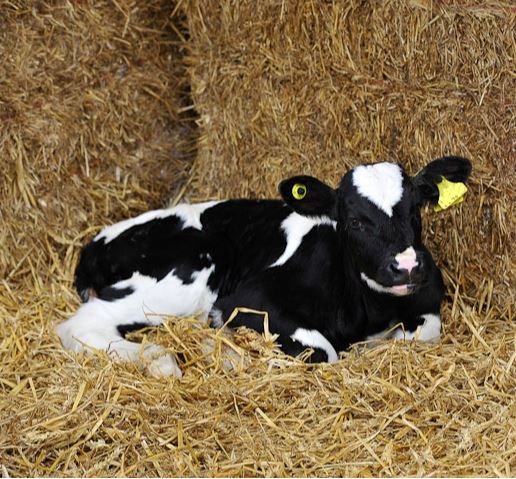- Home
- Knowledge library
- Control of cryptosporidiosis in calves (PhD)
Control of cryptosporidiosis in calves (PhD)
Summary
During this research project the role that adult cattle play in the transmission of Cryptosporidium has been examined on both a beef and a dairy farm. This work has involved multi-locus genotyping, which is a more discriminatory diagnostic tool, and the improvement of current protocols to examine samples collected from adult cattle. Transmission has further been explored by looking at species and multi locus genotypes present in rabbits and pheasants which were present on Scottish farmland to see if wildlife could potentially play a role in transmission of the parasite.
It has been determined that a severely affected calf could result in losses of £111.16 when compared to a calf without clinical cryptosporidiosis when sold at 6 months of age. This cost is based on reduction in weight gain only and does not include farmer time, vet costs or treatment. In the final year of the PhD a study was completed to determine the best disinfectant to use to inactivate Cryptosporidium oocysts. This data was presented at the BCBC conference as an invited AHDB Beef and Lamb student speaker in January 2018.
Industry messages
1.Transmission of C. parvum
- Calves are predominantly infected with the species C. parvum, which is also present in adult cattle.
- Adult dairy cattle, on the studied farm, are unlikely to play a major role in C. parvum transmission.
- Rabbits and pheasants can carry zoonotic genotypes of C. parvum including those which infect calves.
2. Production impacts of cryptosporidiosis
- Calves with severe cryptosporidiosis in the first few weeks of life are significantly smaller at 6 months of age than calves which had no clinical signs of disease.
- The difference in weight occurs in the first month of life and these calves failed to catch up over a 6 month period.
- Using a cost analysis specific to the study farm, a calf with severe clinical cryptosporidiosis could be worth £100 less on average than a calf with no clinical disease.
- Calves with mid range disease still suffered a reduction in growth.
3. Disinfection
- Hydrogen peroxide based disinfectants are the most effective at inactivating Cryptosporidium oocysts.
- This disinfectant must always be made up fresh and according to the manufacturer’s guidelines.
- A dirty environment reduces disinfectant efficacy and so the pen must be cleaned properly prior to disinfection.
Downloads
61110031 - Final Report 2019About this project
The Challenge
Cryptosporidiosis is a disease caused by the protozoan parasite Cryptosporidium. The main clinical symptom is diarrhoea which often results in dehydration, especially in younger animals. Cryptosporidium is one of the main causes of enteric disease in neonatal cattle and lambs. Mortality can occur if the dehydration is severe or if the parasite makes the animal susceptible to concurrent infections. This could result in long term health and growth rate of livestock being affected.
Animals become infected by ingesting oocysts which are released in the faeces of an infected host. These oocysts have a thick exterior wall which makes them very difficult to remove from the environment, which they can survive in for months.
The costs to the producers in the form of vet bills, treatment costs and reduced performance, make this parasite very important in terms of economic loss. An infected animal has the potential to shed millions of oocysts and so pass the parasite on to other animals on the farm.
The Project
The aims of this PhD were as follows:
- Identify ways to reduce transmission of Cryptosporidium to young calves and so reduce the incidence of disease.
- Determine the economic impact of cryptosporidiosis on the long term health and weight gain of beef calves.
- Determine the source of transmission of Cryptosporidium to calves by looking at dams, wildlife and water.
- Research and communicate farm based measures to reduce Cryptosporidiosis in beef and dairy calves.
Student
Hannah Shaw



